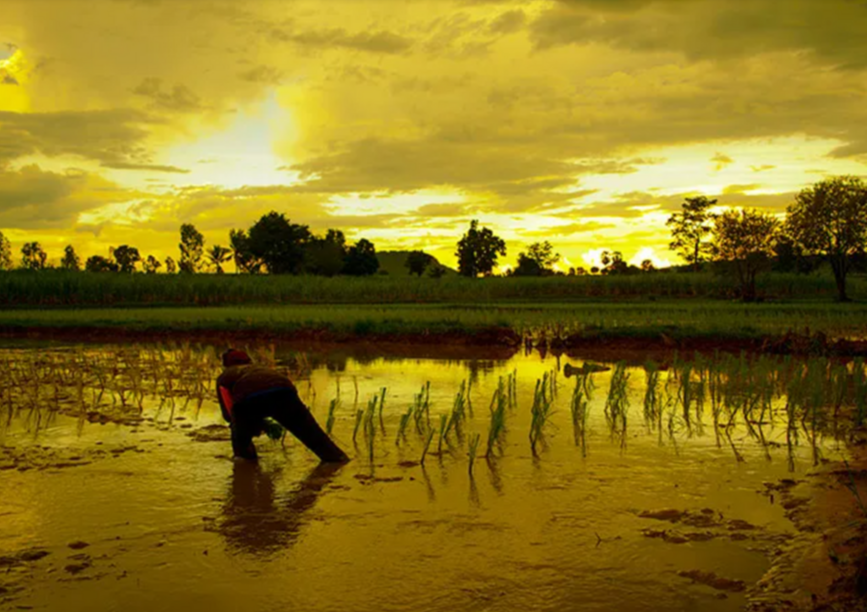
The effects of climate change, specifically heatwaves and water scarcity, exert disproportionate effects on women in India. Currently, water reservoir levels in the country have plummeted to a mere 35 percent of their total capacity, intensifying alongside heatwaves, which will significantly disrupt lives, particularly those of women. Recent studies highlight that Indian women are notably more vulnerable to extreme temperatures compared to men, amplifying existing gender disparities in health, economic opportunity, and educational access.
Recent studies highlight that Indian women are notably more vulnerable to extreme temperatures compared to men, amplifying existing gender disparities in health, economic opportunity, and educational access.
A gendered impact
The intricate interplay between gender dynamics, societal norms, and climate change exacerbates women's vulnerability to heatwaves in India. During such events, traditional gender roles often heighten physical strain on women as they are tasked with longer journeys to fetch water or working outdoors in agriculture amidst extreme heat. The United Nations Human Rights (UNHR) “Right to Water” report reveals that women can spend up to four hours daily on water-related tasks, exacerbating health risks, particularly due to waterborne diseases. Moreover, cultural norms often sideline women's health concerns, compounding their vulnerability to heat-related illnesses. Additionally, limited decision-making power in household and community water management further impedes women's access to essential resources for coping with heat and water scarcity.
Pregnant and elderly women face heightened risks from heat stress, leading to complications like pre-term labour, worsened health conditions, and increased stillbirth rates. Studies from the Asian Development Bank (ADB), indicate that a 1°C temperature rise correlates with a 6 percent increase in preterm births, soaring to 16 percent during heatwaves while the likelihood of stillbirths rises by 5 percent for every 1°C increase.
Economic opportunities for women, especially in agriculture and informal sectors, are severely impacted by heatwaves and droughts. Agriculture emerges as the sector most vulnerable to climate risks. Recent studies have highlighted a negative correlation between heat waves and agricultural yields. This underscores the sector's susceptibility to fluctuations in climate conditions. As per the NITI Aayog, approximately 80 percent of rural women in India are employed in agriculture. The combined effects of heatwaves and water scarcity threaten their ability to engage in farming, particularly tasks like irrigation. Diminished agricultural yields and loss of biodiversity further strain women reliant on subsistence farming or natural resources for their livelihoods.
The combined effects of heatwaves and water scarcity threaten their ability to engage in farming, particularly tasks like irrigation. Diminished agricultural yields and loss of biodiversity further strain women reliant on subsistence farming or natural resources for their livelihoods.
Approximately 54 percent of women in India reside indoors, suggesting a potential refuge from extreme heat. However, remaining indoors can heighten vulnerability due to insufficient ventilation and cooling mechanisms. Additionally, studies show that elevated indoor temperatures also reduce women's work capacity, resulting in an income loss of up to 30 percent for home-based workers in India. Women already earn 20 percent less than men on average, and this gap is further widened due to heat waves.
Adopting effective measures
Addressing these challenges necessitates a gender-sensitive approach in policy and planning. Ensuring women's participation in community water management decisions and access to resources for heat stress mitigation is critical. Tailored health services must meet the specific needs of women during such events. Effective heat action plans and localised water management strategies are imperative at the state, city, and village levels. However, existing Heat Action Plans (HAPs) in India often overlook local contexts and fail to adequately address vulnerable populations.
The gendered impacts of heatwaves and water scarcity in India underscore the urgent need for comprehensive strategies that prioritise the well-being and empowerment of women and girls. Addressing these challenges requires a multifaceted approach that integrates gender perspectives into all aspects of climate resilience planning and implementation.
The gendered impacts of heatwaves and water scarcity in India underscore the urgent need for comprehensive strategies that prioritise the well-being and empowerment of women and girls.
To mitigate the disproportionate effects of heatwaves and water crises on women and girls, several strategies can be adopted:
-
Promoting women's leadership: Empowering women to participate in decision-making processes related to water management and climate resilience can ensure that their voices are heard and their specific needs are addressed.
-
Gender-responsive policy and planning: Implementing gender-responsive budgeting in climate policies is essential. Allocating resources specifically targeted at reducing the vulnerability of women and girls to heatwaves and water scarcity can lead to more effective and equitable outcomes.
-
Enhancing access to resources: Providing women with access to clean water can alleviate the burden of water collection and household chores. Recent policy initiatives in India, such as the Jal Jeevan Mission aimed at providing individual household tap connections in rural areas signify significant progress in alleviating the daily burdens on women.
-
Improving education and employment opportunities: Promoting women's access to education and employment opportunities in climate-resilient sectors can enhance their capacity to adapt to changing environmental conditions.
-
Collecting sex-disaggregated data: Investment in research and data collection focused on the gendered impacts of climate change is essential for informed policymaking and implementation. Collecting sex-disaggregated data on the effects of heatwaves and water scarcity on women and girls can inform evidence-based policymaking and ensure that interventions are targeted effectively.
-
Climate resilience agricultural practices: To support women farmers, training in climate-resilient farming techniques, and equal access to agricultural inputs, technology and information and infrastructure development becomes critical. Adopting such measures with emphasis on the unique needs and strengths of women will help in ensuring that women farmers are equipped to adapt to changing climate
In conclusion, addressing the gendered impacts of climate change requires a comprehensive approach integrating gender perspectives into all aspects of climate resilience planning and implementation. Prioritising gender equity in climate action can build more resilient and sustainable communities for all.
Aditi Madan is a Fellow at the Institute for Human Development.
Arjun Dubey is a Research Associate at the Institute for Human Development.
The views expressed above belong to the author(s). ORF research and analyses now available on Telegram! Click here to access our curated content — blogs, longforms and interviews.




 PREV
PREV



